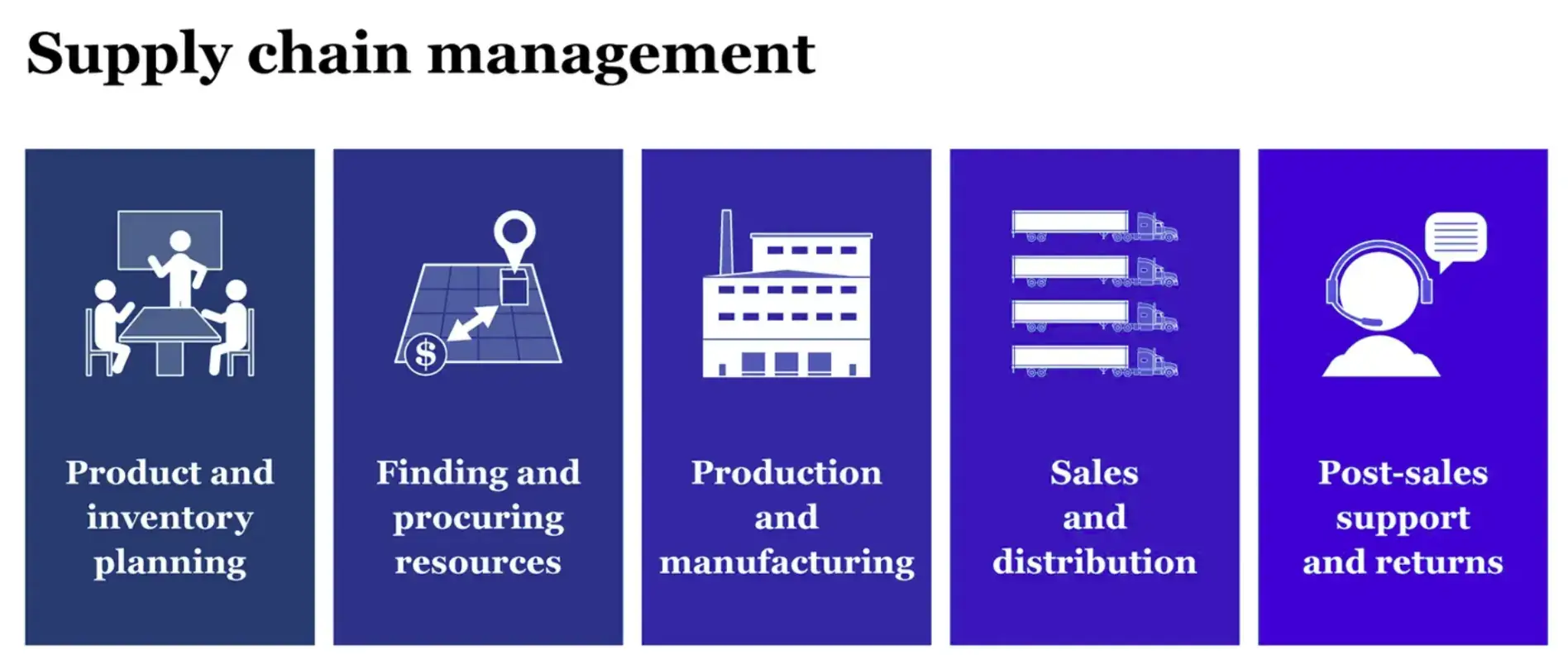Building a successful eCommerce business is a long and winding road, but the good news is that the current industry and market trends offer plenty of opportunities for success.
While the eCommerce market is booming around the world and will continue to grow in the years to come, it’s important to remember that with more opportunity comes more competition.
The sheer volume of the market and the upward trend allow newcomers to start an online store and build successful online businesses relatively quickly.
However, those same trends invite more competition into the market while inflating the eCommerce enterprises currently dominating their respective niches.
This is why it’s imperative for eCommerce business owners to start optimizing their operations across the board to boost financial efficiency and conversions.
Here are some top tactics you can use to streamline your e-Commerce workflow to take your business to the next level.
Better Monitoring for Better Resource Optimization
Let’s start with tracking and monitoring your online efforts, including all paid and organic traffic.
It should go without saying that, to maximize your advertising and marketing dollars, you need to be able to track all your metrics and customer touchpoints.
For example, global social commerce sales will grow to $2.9 trillion by 2026, so this is a potential advertising channel to invest in and grow. But that’s just one of the ways to leverage paid and organic campaigns.
To do this, you need to know exactly where your visitors are coming from, which ads are performing and underperforming, why some are better than others and much more.
The more metrics and touchpoints you can monitor, the more robust your datasets will be, which you can leverage to optimize your workflow, campaigns, and overall spend.
A good way to do this is to centralize the data in comprehensive ad-tracking software like Voluum, which can be used to track both paid and organic traffic.
The key is to use the tracker to gain an in-depth understanding of how your different ad campaigns are performing and how they’re performing relative to your organic marketing efforts. This will tell you which organic marketing workflows you need to optimize to bring out the true potential of your ads.
Remember, paid and organic marketing need to support each other to maximize the ROI.
Automate Marketing Processes to Save Time and Money
While we’re on the topic of marketing, let’s venture further into marketing automation and what you can do to alleviate some of the pressure off yourself or your marketing team.
E-commerce marketing is one of the most time-consuming processes simply because it encompasses a myriad of different paid and organic tactics — which can also eat away at your budget very quickly if you’re not careful.
Optimizing the marketing workflow saves time and money and allows you to focus on the underutilized marketing processes in your marketing toolbox. Of course, automation is the key to successful optimization.
Social media is an excellent example of a marketing process you can automate on numerous fronts.
The key to successful social media automation is understanding the different types of automation and choosing the ones that will save you the most time and money.

Source: Unsplash
For example, two of the best social media automations are scheduling and content creation.
With the rise of generative AI, creating social media posts is easier than ever before, as you can train the AI to learn your brand's personality and values, as well as your goals, and create relevant social media posts and campaigns for you.
Putting social media on autopilot is one of the easiest ways to free up time and financial resources, which you can then pour into email marketing, ads, and new landing pages.
Optimize Your Financial Processes
When it comes to finances, one of your top priorities should be to minimize financial waste.
You can do that by finding areas where you can cut unnecessary expenses, typically by automating different processes, such as the ones we mentioned above.
The good thing about automation is that, when implemented correctly, it can help you reduce your financial burdens while elevating efficiency. In your financial sector, you can use automation software to streamline all customer and supply chain financial transactions and processes in general.
This is especially beneficial when you want to streamline operations with suppliers, for example, as you can use ePayables as a form of digital payment management that's more secure and cost-effective than traditional payment methods.
There are many benefits of ePayables for eCommerce businesses, but cyber security and efficiency are at the top of the list.
Not only is it more convenient than dealing with cheques and manual transactions, but everything is done online on a centralized platform so that you can monitor and manage your supply chain finances efficiently.

Source: Britannica Money
Always remember that backend management is just as important as providing your customers with efficient and secure payment solutions.
On the customer-facing side, your priority should be to ensure transaction speed and efficiency as much as possible, even though it will typically be up to the banks to reduce transaction times.
Offer customers as many solutions as possible to ensure they can buy products on their terms, and consider regional limitations if you want to sell in as many countries as possible.
Some payment methods aren't available in some regions, so not having a solution to that problem will cost you time and revenue.
Focus on Inventory Management and Order Fulfillment
Inventory management and order fulfillment are other crucial areas where you can streamline and automate various processes and cut financial waste. Let's start with inventory management.
If you monitor consumer trends in your niche and analyze emerging trends proactively, you should have enough data to implement just-in-time inventory management.
Just-in-time inventory management means that the goods you're selling arrive at your warehouse exactly when they're needed — when there's a surge in consumer demand.
This minimizes time, money, and space waste and almost eliminates "idle products" in your warehouse.

Source: Unsplash
Another crucial implementation you need to make as your eCommerce business grows is to implement warehouse management software.
This one is non-negotiable, as you need this software to track your inventory in real-time, get restock alerts, and track your orders. Keep in mind that this will also be a crucial integration for your website so that it presents accurate stock levels for every product.
Another major area where you can streamline your workflow concerns order fulfillment and effective purchase order tracking. Implementing a tracking system allows you to monitor and manage every stage of the order, ensuring timely fulfillment and improving customer satisfaction.
The first and most obvious thing you can do is optimize order processing. Although order processing efficiency will depend on order volume, processing automation can minimize bottlenecks.
You can automate tasks like receipt printing and shipment slips, which you can create automatically as a new order comes in. You only need to pack the items, but you can automate that as well if you have your own warehouse.
Digitizing and automating order processing, shipment tracking, packing, and labeling expedites order fulfillment and reduces the risk of errors and returns.
Analyze Your Conversion Cycle and Identify Bottlenecks
On the sales side, streamlining the sales cycle doesn't just mean ensuring faster or more seamless conversions. It's all that, plus increasing customer retention, boosting cross-sell and up-sell opportunities, and maximizing the potential of all conversion touchpoints.
So, what are your potential conversion touchpoints?
For example, using a UX design tool to optimize your product and landing pages can significantly improve user experience, as well as your social channels if you engage in social selling.
Email would be another touchpoint that can easily lead a potential customer to the conversion stage with a good offer and a powerful CTA.
Optimizing all of these touchpoints, including your ads, direct messages, and organic content across the web, will help you shorten the e-commerce sales cycle. On the other hand, you also need to think about customer effort as a whole.
Did you know that 25% of online shoppers abandon their cart because the site wanted them to create an account?
Minimizing customer effort is crucial in creating shorter and more efficient sales cycles in eCommerce.
In essence, the customer should have to take as few steps as possible to purchase a product, and the checkout experience should be extremely short. Eliminate needless login requests and forms. Apply discount codes automatically and calculate shipping fees as soon as possible — don't wait for the last step.
The key is eliminating those instances when customers tend to drop out of the purchase.
Over to You
Optimizing your eCommerce workflow is not just about giving you more time during the day or focusing on other business ventures and opportunities — although it is also about that.
By streamlining your eCommerce operations using these tactics, you'll effectively stay ahead of the curve and future-proof your business in a hyper-competitive industry.
From smart automation and better and more efficient marketing practices to optimizing supply chain and inventory management, these changes will allow you to compete with the big brands in your niche.
The result will be a more stable and efficient eCommerce operation that can resist the industry's changing tides, no matter where they try to take you.
Author Bio
Nikola is a seasoned brand developer, a writer, and a storyteller. Over the last decade, he’s worked on various marketing, branding and copywriting projects – crafting plans and strategies, writing creative online and offline content, and making ideas happen. When he is not working for clients around the world, he is exploring new topics and developing fresh ideas to turn into engaging stories for the online community.


